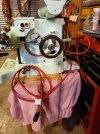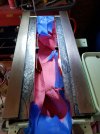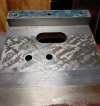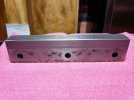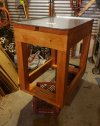Ian
Notorious member
YEAH, BABY!! Chinese end mill (dressed with Chinese triangle hone by Yours Truly), Chinese milling machine, clamps, 123 blocks, R8 collet, 'Murican drawbar wrench, and dumb hillbilly turning the cranks. Didn't turn out too bad, dead accurate, square, flat, and and parallel on both sides. Turns out when tramming that the dovetail taper was all on the gib side relative to the "base" of the ways, so I didn't split the taper between the cuts. The straighter way was worn, bent, or cut at about 65⁰ so I was as glad to fix it as I was the the other side that had a bad taper and trough in it.
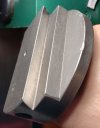
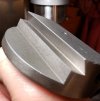
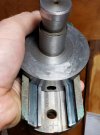
The dovetail opposite the gib blued in nicely to the fresh, 60⁰ milled cut so very little will be required to perfect the fit. The gib might even be ok with more honing. It would actually be serviceable just like it is, but anything worth doing....



The dovetail opposite the gib blued in nicely to the fresh, 60⁰ milled cut so very little will be required to perfect the fit. The gib might even be ok with more honing. It would actually be serviceable just like it is, but anything worth doing....

